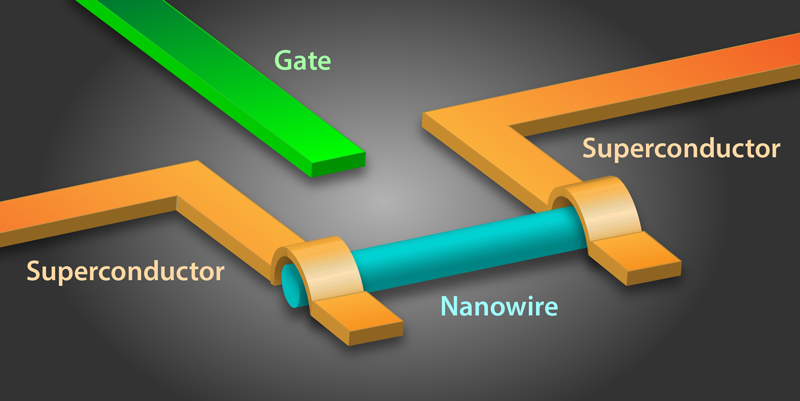In the realm of quantum computing, the superconducting quasicharge qubit has emerged as a pivotal element, intertwining the principles of superconductivity with quantum mechanics. This remarkable construct not only addresses fundamental questions regarding coherence and information processing but also stirs intrigue among researchers and enthusiasts alike. The qubit’s design, functionality, and the complex underlying physics present an enthralling enigma deserving of in-depth exploration.
At the heart of superconducting qubits lies the phenomenon of superconductivity, characterized by the complete absence of electrical resistance in certain materials when cooled below a critical temperature. In the context of quantum devices, superconductors exhibit unique properties that facilitate the manipulation of quantum states. Unlike classical bits, which oscillate between binary states represented by 0s and 1s, qubits can occupy superpositions of these states, enabling parallelism that significantly enhances computational power.
The quasicharge qubit, in particular, exploits the concept of charge quantization in superconducting circuits. Designed using Josephson junctions—thin insulating barriers between superconducting materials—these circuits can exhibit various charge states. Driving the qubit into different potential wells allows researchers to manipulate its quantum state with exquisite precision. The quasicharge, defined by the effective charge degree of freedom, is instrumental in encoding information. This peculiar property has garnered attention for its potential in quantum information applications, making it a cornerstone of advanced quantum technologies.
One compelling aspect of superconducting quasicharge qubits is their versatility in coupling with other quantum systems. This interaction paves the way for hybrid quantum systems that meld different platforms, such as photonic and atomic devices, creating opportunities for innovations in quantum communication and cryptography. The ability to interface qubits with diverse systems raises profound questions about the boundaries of quantum control and coherence, and how entanglement phenomena manifest in such configurations.
Coherence, a fundamental tenet of quantum computing, relates to the qubit’s ability to maintain its quantum state amid environmental interactions. Superconducting quasicharge qubits have demonstrated remarkable coherence times, albeit influenced by various decoherence mechanisms which challenge their computation capabilities. Observations reveal that frequency fluctuations, thermal excitations, and electromagnetic noise contribute to decoherence, necessitating advanced error correction protocols to preserve information integrity.
Moreover, the process of measuring superconducting quasicharge qubits introduces insightful complexities. Quantum measurement, an inherently probabilistic process, collapses a qubit’s superposition state into a definitive outcome. Understanding the implications of this collapse is crucial for disentangling the nuances of quantum algorithm implementations. The disconnect between the classical measurement apparatus and the elusive quantum realm often prompts philosophical contemplations over the nature of reality itself and the observer’s role within it.
A captivating trait of superconducting quasicharge qubits is their ability to showcase non-classical phenomena, such as quantum tunneling. This phenomenon allows the qubit to transition between potential wells, an act previously deemed impossible within classical physics, thereby enlightening researchers on the delicate interplay between quantum uncertainty and potential energy landscapes. Engaging with tunneling phenomena not only broadens the understanding of qubit dynamics but also provides insights into macroscopic quantum phenomena, bridging classical and quantum domains.
Interestingly, the study of superconducting quasicharge qubits has prompted broader inquiries into fundamental physics. For instance, the exploration of quasicharge dynamics has implications for understanding topological phases of matter. This connection highlights an intersection between quantum computing and condensed matter physics, emphasizing the need for interdisciplinary collaboration in advancing both fields. The quest for topologically protected qubits underscores the drive toward fault-tolerant quantum computation, showcasing the profound scientific implications of qubit research.
As the technological landscape continues to evolve, the superconducting quasicharge qubit stands at the forefront of quantum innovation, signaling the potential transition from experimental frameworks to practical applications. Startups and established companies alike are investing in advances using superconducting qubits, seeking to harness their capabilities for practical quantum algorithms, quantum communication frameworks, and even advancements in artificial intelligence. The implementation of these technologies could usher in a new era of computational paradigms, fundamentally altering society’s interaction with technology.
However, the path forward is laden with challenges. As researchers strive to enhance qubit performance, addressing issues related to scalability, integration, and error rates remains paramount. The design of hybrid architectures, combining different types of qubits and leveraging their unique advantages, emerges as a promising avenue for addressing these fundamental limitations. Alongside this, significant dialogue continues regarding the ethical implications of quantum computing and the ramifications of its widespread deployment within society.
In conclusion, the superconducting quasicharge qubit encapsulates an intricate blend of fundamental physics and cutting-edge technology. Its capacity to embody the principles of quantum superposition and entanglement presents a fascinating landscape ripe for inquiry. As researchers delve deeper into the fabric of quantum reality, exploring the science behind these qubits will undoubtedly continue to captivate minds, offering a glimpse into the potential future of computation and our understanding of the universe.












